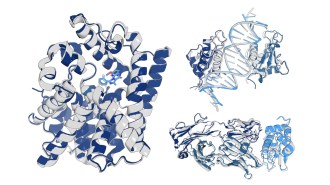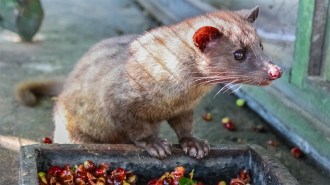Cleaning up contaminated soil, a process called bioremediation, may one day be a routine job for bacteria. Bringing that possibility closer, researchers have completed the first field study of a bacterium that not only breaks down organic chemicals that contaminate soil but also lights up to indicate that it’s working.
Scientists at the University of Tennessee in Knoxville and Oak Ridge (Tenn.) National Laboratory created a genetically engineered bacterium known as Pseudomonas fluorescens HK44. “It was engineered to produce light when it sees hydrocarbon contaminants,” says Tennessee’s Gary S. Sayler. The scientists fused a gene from a luminescent marine bacterium into the soil bacterium’s gene sequence associated with a biochemical pathway for breaking down naphthalene. When the bug feasts on naphthalene, it glows.
In 1998, Sayler and his colleagues completed a 2-year outdoor study to assess how well the bacterium works. They placed P. fluorescens HK44 in large, partially buried vats of soil contaminated with naphthalene and two related compounds. The vessels acted like gigantic laboratory flasks—9 feet in diameter, Sayler notes.
Using a host of instruments, the scientists monitored conditions inside the vats. Over the course of the study, they tweaked the conditions to see if they could influence the glow. Some of the bacteria died, Sayler says, but if the scientists stimulated the rest, they grew and glowed. The light was rather faint, requiring the scientists to use special equipment to detect luminescence.
A large proportion of the contaminants simply evaporated during the study, Sayler admits, but “we accomplished 20 to 40 percent degradation by biological action. It does appear that it was significant.” He and his coworkers reported their findings Feb. 2 in the online version of Environmental Science and Technology.
P. fluorescens HK44 is the first engineered organism to successfully go through the Environmental Protection Agency’s full biotechnology risk-assessment review, says Sayler. EPA granted permission for a limited environmental release of the bacterium for research purposes.
Plans for a test on an actual contaminated site await funding.






